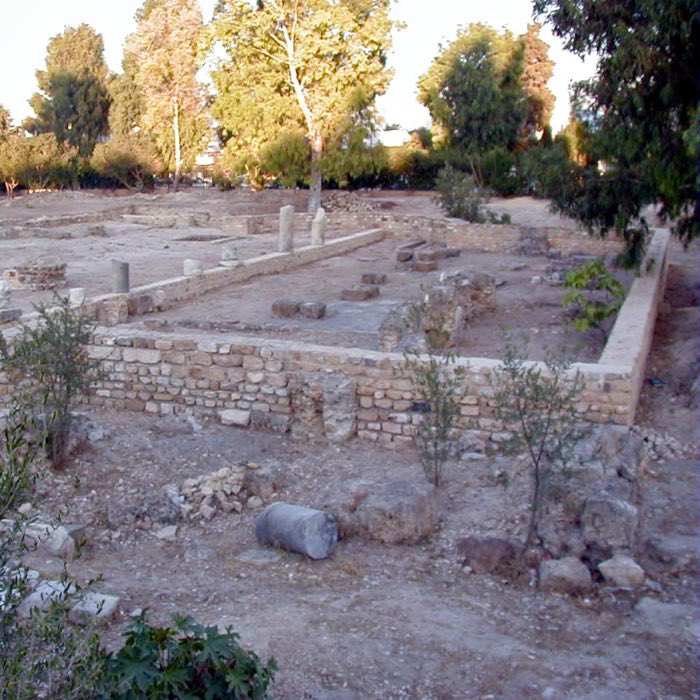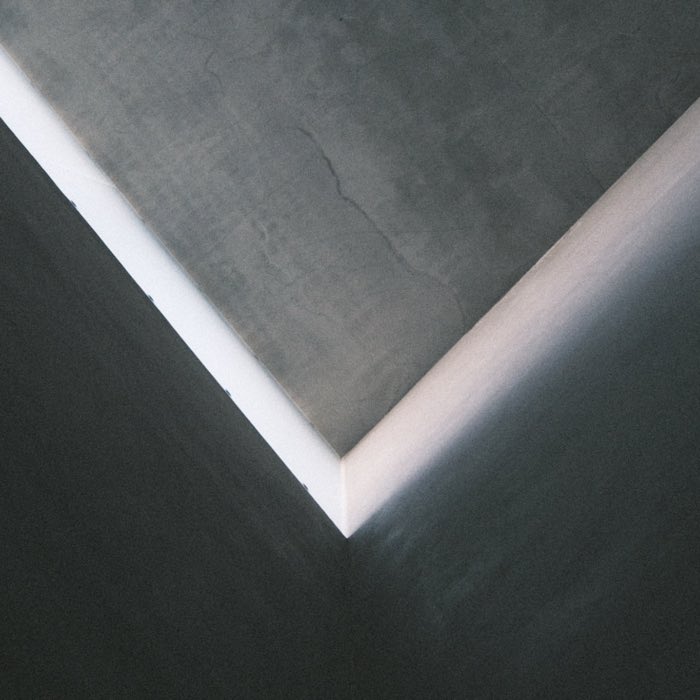Rediscovering Cologne’s early Christian baptistery
The rediscovery of Cologne’s early Christian baptistery in 1866 unearthed one of the oldest and most significant Christian relics north of the Alps. This ancient site, located near the Cologne Cathedral, dates back to the 6th century and played a crucial role in the city’s early Christian community. The octagonal baptismal basin (Piscina), central to the baptistery’s design, offers a rare glimpse into the architectural and liturgical practices of early Christianity in the Rhineland. Today, the site has been preserved and sensitively modernized, showcasing both the spiritual and historical significance of early Christian architecture. Fortunately, I was lucky to visit the site during the Day of the Open Monument in 2024ꜛ. Here are some impressions together with a brief overview of the history of the baptistery, from what I have been able to find out so far.
 The octagonal baptismal basin (Piscina) of the baptistery in Cologne, rediscovered in 1866.
The octagonal baptismal basin (Piscina) of the baptistery in Cologne, rediscovered in 1866.
The rediscovery and historical background
The uncovering of Cologne’s early Christian baptistery in 1866 during construction work near the cathedral marked a significant discovery for Christian archaeology in northern Europe. Situated east of the Cologne Cathedral choir, the site is believed to date back to the 6th century, originating from late antiquity. It likely began as part of a Roman house that served as a Christian meeting place, before being transformed into a dedicated baptistery. The octagonal baptismal basin (Piscina) at its heart provides a rare and valuable glimpse into early Christian ritual and architecture, and is regarded as one of the oldest Christian relics in the region.
 The findings of the baptistery. Since the discovery of the baptistery in 1866, the site has been archaeologically investigated again in 1926 and 1968. The structures uncovered belong to different eras and are marked here according to their chronological sequence: Red: Roman period walls, orange: first, Roman period basin and surrounding room, light green: early medieval 1 with second, now visible basin and surrounding baptistery, dark green: early medieval 2 and blue: high medieval: forecourt walls to the church to the west.
The findings of the baptistery. Since the discovery of the baptistery in 1866, the site has been archaeologically investigated again in 1926 and 1968. The structures uncovered belong to different eras and are marked here according to their chronological sequence: Red: Roman period walls, orange: first, Roman period basin and surrounding room, light green: early medieval 1 with second, now visible basin and surrounding baptistery, dark green: early medieval 2 and blue: high medieval: forecourt walls to the church to the west.
Architectural and liturgical significance
The octagonal shape of the Piscina, characteristic of early Christian design, played a crucial role in the baptismal rites practiced by early Christians in Cologne. The structure’s inward-facing steps allowed the faithful to enter and cross the pool, symbolizing purification through full immersion in water. Baptism was a central ritual for early Christians, and this baptistery represents the transition from Roman architectural traditions to Christian sacred spaces. The structure’s design, featuring a canopy supported by columns, may have offered spiritual protection and privacy for the ritual, with its lavish materials, such as marble, reflecting the reverence attached to the sacrament of baptism.
 Reconstruction of the interior of the baptistery. Columns supporting a canopy and used to attach curtains probably stood on the cantilevered side walls of the baptistery. It can be assumed that the masonry, which still exists today, was clad with precious material. The steps opposite each other, which enabled the person being baptized to pass through the piscina from one side to the other, are decisive for its interpretation as a Christian baptistery.
Reconstruction of the interior of the baptistery. Columns supporting a canopy and used to attach curtains probably stood on the cantilevered side walls of the baptistery. It can be assumed that the masonry, which still exists today, was clad with precious material. The steps opposite each other, which enabled the person being baptized to pass through the piscina from one side to the other, are decisive for its interpretation as a Christian baptistery.
This baptistery is particularly significant for its place in the history of Christian architecture. Its design elements — such as the octagonal pool and the likely decorative details — served as a model for future Christian sacral buildings in Europe. As such, the Cologne baptistery stands out as a key example of the architectural and liturgical evolution of Christian structures in the region.
 The baptistery and the episcopal church of the 6th century. The large eight-sided basin, the piscina, formed the central point of the baptistery, which was used solely for baptism. The associated church is documented under the choir of the cathedral. It could only be entered after baptism had taken place. Both buildings are located within the Roman city wall.
The baptistery and the episcopal church of the 6th century. The large eight-sided basin, the piscina, formed the central point of the baptistery, which was used solely for baptism. The associated church is documented under the choir of the cathedral. It could only be entered after baptism had taken place. Both buildings are located within the Roman city wall.
 The sequence of church buildings on the cathedral hill since the 6th century. The baptistery can be seen between the choir of today’s cathedral and the collegiate church of St. Maria ad Gradus, which was demolished in 1817. The church belonging to the baptistery had to make way for the Old Cathedral at the beginning of the 9th century, which in turn was replaced by the new Gothic building from 1248.
The sequence of church buildings on the cathedral hill since the 6th century. The baptistery can be seen between the choir of today’s cathedral and the collegiate church of St. Maria ad Gradus, which was demolished in 1817. The church belonging to the baptistery had to make way for the Old Cathedral at the beginning of the 9th century, which in turn was replaced by the new Gothic building from 1248.
Restoration and modern display
After its rediscovery, the baptistery was initially covered with a protective structure, making it one of Germany’s earliest examples of archaeological preservation. The modern era brought further changes, particularly between 2013 and 2016, when the site underwent a sensitive redesign by Munich architects Allmann Sattler Wappner. Their work included the construction of a new entrance and forecourt that seamlessly integrated with the surrounding area of the cathedral. The forecourt, which features bronze elements and terrazzo flooring, subtly evokes the baptistery’s ancient past by mimicking the curtains that once hung between its columns and alluding to the mosaics that may have adorned its original interior.

 The baptismal basin (Piscina), detail.
The baptismal basin (Piscina), detail.
The new design emphasizes simplicity and respect for the site’s history, allowing visitors to focus on the historical significance of the baptistery while simultaneously experiencing a modern architectural interpretation. The bronzed panels and the unadorned walls create a space that invites contemplation and reflection, harmonizing with the spiritual weight of the site’s past. The illuminated display at night opens the space to the city, making the baptistery a visible reminder of Cologne’s Christian roots.
 New hall in front of the Baptistery.
New hall in front of the Baptistery.
 Part of the lighting system in the new hall.
Part of the lighting system in the new hall.
Conclusion
Cologne’s early Christian baptistery is a unique evidence of the city’s religious and architectural history. As one of the oldest Christian relics north of the Alps, its octagonal Piscina and the surrounding structure represent both the development of early Christian liturgical practices and the architectural transition from Roman to Christian sacred buildings. The modern renovations have further cemented the baptistery’s significance, turning it into an inviting space for reflection and study. In my opinion, visitors to the site can now experience the spiritual and historical weight of early Christian architecture in a contemporary setting, bridging the gap between the past and the present.













comments